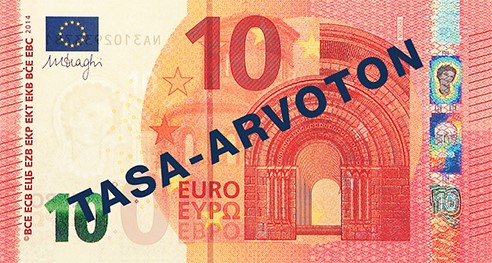
STTK started to commemorate Women’s Payday in 2011 with the objective to make the pay gap between women and men more visible. The follow-up shows that the pay difference has only seen a slight decrease during that time. This year, women earn on average 83.4 per cent of men’s pay, and based on that proportion, the payment of women’s wages stops on 1 November.
STTK’s lawyer Anja Lahermaa, who is in charge of equality issues, points out that although Finland is known to be a model state in equality, women in Finnish working life suffer from a weaker labour market position and unequal pay. – In these times of economic difficulties, it feels that hardly anyone cares about the promotion of equality in working life. STTK is extremely concerned about this and wants to keep equality issues on the agenda in the Finnish discourse and decision-making. Furthermore, gender and equality assessment must be conducted already in the preparatory phase of issues, prior to decisions.
STTK speeds up the continuation of the tripartite Equal Pay Programme. – The previous programme ended in March. The new government must push ahead with the Equal Pay Programme at once, Lahermaa demands.
Sweden ten years ahead
In Sweden, the important point of comparison for Finland, women earn this year on average 86.8 per cent of what men are paid, according to the local Medlingsinstitut’s report. Sweden was on Finland’s level ten years ago. Sweden also has more women in management positions than Finland.
Family leaves have a bearing on women’s and men’s pay development. In Sweden, men’s share of the use of parental leaves is 25 per cent, whereas in Finland it is under 9. Sweden allocates significantly better resources to the monitoring of pay surveys and of the pay discrimination defined in the Discrimination Act than Finland. – It is justified to ask why Sweden pulls it off and Finland doesn’t. Finland has all the opportunities to break up family leaves on more equal terms and hence promote women’s career development. Both factors have a decreasing impact on the pay gap, Lahermaa points out.
In 2015, Women’s Payday that was launched by STTK is for the first time also observed in the EU at the end of the year, 2 November, instead of the beginning of the year. The day stands symbolically for the point in time in which women’s salary payment stops in the entire labour market according to the European average (the difference in gross hourly wages is 16.4 per cent in the EU). On 2 November, the Commission publishes country-specific fact sheets on its website, containing Eurostat statistics, e.g. average hourly wages as well as each country’s position in comparison to other EU states. Also ETUC, the European Trade Union Confederation commemorates Women’s Payday across Europe.
For more information at STTK: lawyer Anja Lahermaa, telephone +358 40 828 6845.